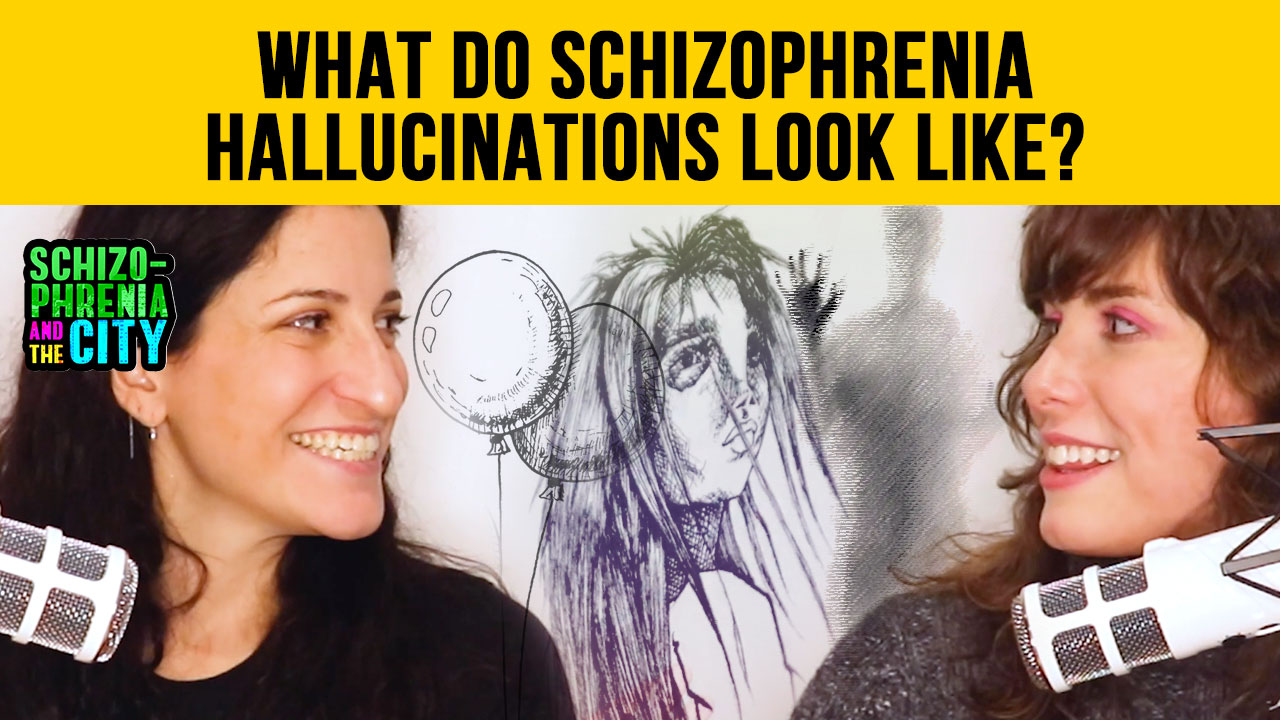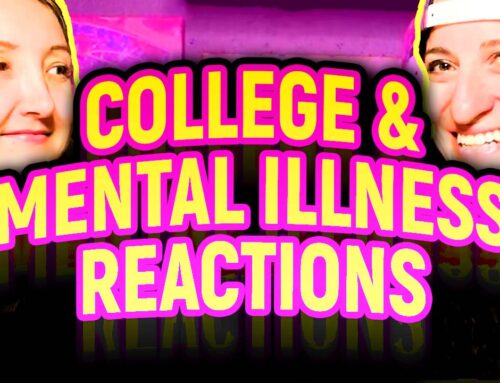What Do Schizophrenia Hallucinations Look Like?
Disclaimer: Just like you should never ask a disabled person how they became disabled, never ask a person what their hallucinations say. It ignores the person themself and focuses on the details of their condition, it is a very personal, private topic, and it may trigger past traumas or even more hallucinations. A better question would be to ask how the person is feeling – a more considerate, relevant question.
In this episode of Schizophrenia and the City, Michelle Hammer and Cecilia McGough discuss the visual aspect of hallucinations. Cecilia’s hallucinations, sometimes triggered by stress, include large spiders, which don’t speak, but sound like young children laughing and crying whenever they move their legs. A more common hallucination is a spider with long legs with spikes on the ends, which endlessly tap their legs as Cecilia tries to go to sleep. Cecilia used to hallucinate spiders on doorknobs, preventing her from leaving the apartment. It is relatively easy to determine if the spider is real or not – since Cecilia does not hallucinate on screens, she takes a picture of the spider. She would sometimes send pictures of spiders to her friends to confirm that the spider is real. But when taking pictures is not an option, she has to rely solely on external human input. She once, while sitting at the front of a class, started at the sight of a large spider on her desk, causing a commotion. When she realized that nobody else could see the spider, however, she was so embarrassed that she did not return (though she would later find out from classmates that they simply thought the spider had escaped). Another time, a friend joked by claiming that he could see the spider, when, in reality, it was not there.
The characters she hallucinates include a clown and ghost-like girl (discussed in the episode “What Do The Hallucinations Say?”), as well as a young woman. The colors red and white used to be triggering for Cecilia because they were the colors of the clown. Moreover, Cecilia tunes out the clown and keeps track of it by remembering where the red and white is, but if other red and white objects (such as an ambulance) pass by, her mental map is disrupted. Thus, when she sees the clown again, she is startled and starts to spiral. Eventually, however, the issue was remedied with exposure therapy. Cecilia does not like it when people ask about the location of a hallucination – they will inevitably turn to look, and when reality starts interacting with a hallucination, it can be triggering. To cope with hallucinations, Cecilia reduces the triggering elements in her environment, listens to music, and occasionaly hunkers down underneath the covers of her bed.
One of Michelle’s hallucinations is like a TV screen – whenever something is bothering Michelle, like a stressful situation or a fight that was never resolved, it gets displayed right in front of her, obscuring the rest of the world. Sometimes a bad memory would unfold like an episode of a TV show, at the same time fabricating countless other stories. Her hallucination, a purely sensory experience, turns into a delusion, where Michelle has trouble differentiating between fiction and reality. Sometimes, she would call friends and verify individual scenarios, but every time a delusion is resolved a new one takes its place. At the same time, she could engage in various conversations, like smaller TV screens simultaneously playing in different locations in her head. Before taking medications, Michelle would become completely disoriented and detached from the real world, because she was caught up in a hallucination. Michelle is often jolted back to reality by a “who are you laughing at?” from a bystander, which is an inappropriate question because hallucinations are private and personal. Explaining a hallucination in hindsight is difficult, just like a dream. In fact, it is better not to ask anything about a hallucination. Michelle copes with hallucinations by, first and foremost, taking medications, destressing, and interacting with real people. Though hallucinations may be unfortunate, that’s life. Hallucinating scary things does not make you a bad person, and with medications, you can make the best of it.
Schizophrenia And The City
The Podcast
Schizophrenia And The City Hosts
Schizophrenia And The City is a podcast and video series hosted by two New York City women.

Michelle Hammer is a Schizophrenia Activist and spends her time passionately fighting stigma. At 27, Michelle decided to use her artistic talents and fearless personality to do something that could benefit the mental health community. In May 2015, she founded a mental health focused clothing brand. Schizophrenic.NYC is a clothing brand with the mission of reducing stigma by starting conversations about mental health. Michelle has also been featured in many publications such as Mashable, The Daily Mail, Stylist, and Buzzfeed.

Cecilia McGough is a New York City-based mental health activist, writer, media consultant, and radio astronomer. Cecilia also happens to have schizophrenia but does not let her diagnosis define her. Cecilia is the founder and executive director of the nonprofit Students With Psychosis and content creator for the I Am Not A Monster: Schizophrenia project. As a TEDx speaker and Special Books By Special Kids interviewee, Cecilia’s videos have been viewed over 20 million times over multiple platforms across the globe and featured in Forbes, Glamour UK, Barcroft TV, and CBS This Morning national news.





